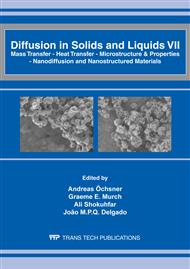p.297
p.303
p.307
p.313
p.318
p.324
p.330
p.335
p.341
Experimental Analysis of the Infrared Thermography for the Thermal Characterization of a Building Envelope
Abstract:
nfrared thermography is being used to identify defects maps of the building envelope, based on the most suitable local thermal parameter. In spite of the fact that the TOBUS method [1] and the multivariate design method [2] consider several complicated building renovations, their applications on energy performance improvement are mainly inadequate [3]. In this research, the developed experimental and theoretical studies show, on the one hand, the thermal characterization (temperature distribution, heat losses and efficiency) of a full-scale building envelope. On the other hand, the applicability and accuracy of this optic technique for the thermal characterization of the building zone with complex geometry is discussed in order to validate results obtained for the thermal characterization.
Info:
Periodical:
Pages:
318-323
Citation:
Online since:
April 2012
Authors:
Price:
Сopyright:
© 2012 Trans Tech Publications Ltd. All Rights Reserved
Share:
Citation:


